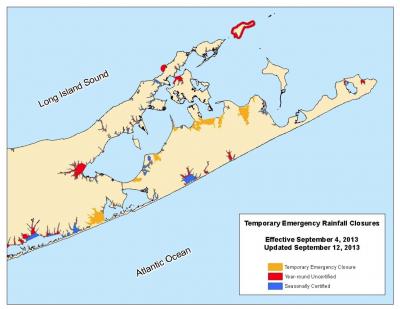State Will Reopen Some Shellfishing Waters
State Will Reopen Some Shellfishing Waters

The New York State Department of Environmental Conservation late Wednesday announced that it would partially lift a temporary ban on shellfish harvest in some East Hampton waters. Several areas remained off-limits, awaiting the results of water tests. The closures were put in place as a precaution following heavy rain on Sept. 3. No specific human health threats have been identified.
As of sunrise on Thursday, harvesters will be able to take shellfish from Accabonac Harbor, Napeague Harbor, and Lake Montauk. Hog Creek, Three Mile Harbor, Northwest Creek, portions of Northwest Harbor, and around Sag Harbor remained off-limits.
In Southampton and Brookhaven Towns, the state will reopen portions of Moriches Bay at dawn Thursday. Closed areas remained Quantuck, Shinnecock Bay, Cold Spring Pond, North Sea Harbor, Noyac Creek, and the Sag Harbor coves and their tributaries.
